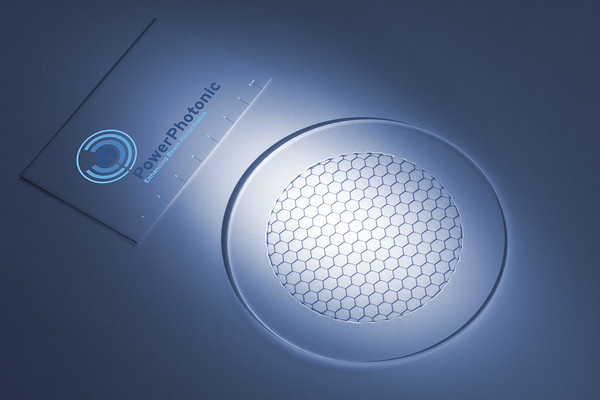PowerPhotonic’s white paper on beam shaping in EV welding shows how the laser intensity profile greatly improves weld performance and safety.
PowerPhotonic’s recently published white paper, ‘Beam Shaping for Enhancing Electric Vehicle Welding Applications’, shows how laser beam shaping, using its freeform, refractive optics, enhances the performance of EV battery laser welding, making the manufacturing process safer and producing more reliable EV batteries. We asked Dr. Stephen Kidd, Head of Sales and Marketing at PowerPhotonic, to explain why beam shaping technology is so beneficial to Electric Vehicle (EV) welding applications and how the safety of both the battery and its production process are improved.
Electric Vehicle battery welding
Laser welding has emerged as the primary joining technology for the large-scale, volume manufacture of lithium-ion, EV batteries; ahead of ultra-sonic, TIG, MIG, spot and other technologies. An EV battery pack design varies among manufacturers and vehicles. For the core battery building block, some use cylindrical cells of 65mm long and 18mm diameter (so called 1865 cells) and others use a multiplicity of different “pouch” sizes. Regardless of design, these batteries require many laser welds. Each lithium-ion cell within the battery has multiple foils of anodes and cathodes that must be welded into electrical terminals which are then, in turn, welded to busbar connections to form the battery pack. Since there are thousands of cells used within each EV battery, many thousands of precision welds are required. Due to the combustible nature of Lithium, every welding process must avoid any undue heating of these materials. In the final manufacturing phase, the batteries are sealed into a protective casing for safety purposes. This sealing is also achieved using laser welds whose strength and durability must match or exceed that of the lifecycle of the EV itself.
Laser welds performance
Laser welding has proven to outperform resistance, arc and ultrasonic welding methods for EV’s because it provides:
- Fast welding at speeds of multiple meters per minute.
- Precise welding, with weld spot and weld pool geometry options of small sizes.
- Focused energy density, minimising risk from direct or run-on heat to nearby, combustible materials.
- Deployment flexibility and ease of automation, such as ease of mounting in robotic arms and use with directional mirrors.
- Non-contact welding, with the weld tool applying no force to the weld material.
- Aesthetics, delivering excellent weld bead finishes.
- Improved strength. Lasers allow ‘Keyhole’ welding which, with its high energy density, has a deep weld penetration and weld pool, maximising the joint interface area and strength.
Laser welding market growth
The Total Available Market (TAM) and Compound Annual Growth Rate (CAGR) for global, EV battery laser welding can be inferred from marketing reports of related markets. These reports show $multi-billion TAM with CAGR’s of between 5 and 10%, typically. Each of the markets covered could expect to see significant, welding machine and system performance benefits from using PowerPhotonic’s optimised, freeform, wafer-scale optics solutions. This suggests that sales of PowerPhotonic’s optics for EV battery laser welding might exceed these market growth predictions, should the supply chain be aware of their benefits and adopt its beam shaping technology.
The following market reports infer the large growth potential for EV battery laser welding:
- Global welding systems (from $24.73 in 2023 to $34.18 bn by 2030/ link)
- Laser welding machines (to $3096.7M by 2032 – 10.15% / Link)
- EV lithium-ion battery consumption (from 345.5GWh to 1.6TWh by 2026 – Link)
- EV vehicle sales (From $14.2M in 2023 to $38.9M in 2029 – Link)
EV laser welding challenges
PowerPhotonic enables the EV battery laser welding source parameters to be optimised, using laser beam shaping to adjust the laser beam’s intensity profile and geometric shape. It uses tailored, freeform, optics to do this, enabling increased performance benefits over Gaussian and flat-top, ‘unshaped’ beam profiles, the industry-standard most commonly used in welding today.
EV battery laser welding source parameters can be adjusted to improve stability and control of the welding ‘keyhole’ and melt-pool to reduce or avoid:
- Porosity, or air pockets which weaken the weld and give failure points.
- Spatter from an unstable melt pool which increases surface roughness, contaminates the surface and risks short circuits in EV battery applications.
Weld material properties must also be considered, including:
- The challenge of joining different materials with different mechanical and thermal properties, such as aluminium, copper and steel, all used in EV applications.
- Reflectivity variance between solid and molten material states.
- Intermetallic phases of hybrid, blended materials formed within the weld.
- Electrical properties to maintain a balanced, electrical resistance and current load, reducing cell degradation and increasing battery longevity.
Welding techniques must also be considered, including:
- Depth and consistency of the weld for optimal strength, without piercing the battery which risks combustion and component damage.
- Repeatability of high precision welds for optimal yield in battery production, reducing the risk of hot cracking after re-solidification.
Freeform Optics Manufacture
Beam shaping for Electrical Vehicle welding applications
PowerPhotonic’s manufacturing process enables point-by-point surface height attribution to produce high-grade, truly freeform, optical surfaces. The optics are designed to integrate into the optical pathway of laser machines or systems, transforming the output beam intensity profile into one optimised for EV battery laser welding. The beam-shaping optics are manufactured from fused silica, using a combination of laser ablation and reflow surface smoothing. This gives a highly smooth finish, with low scatter and low absorption properties, ideal for use in high power applications like welding. It vastly improves performance for a relatively inexpensive modification to equipment. This level of design flexibility is simply not possible with most standard optical components which are typically rotationally symmetric and spherical, leading to a limited range of possible output laser beam intensity profiles.
Melt pool dynamics
In EV battery laser welding, the laser source provides the energy required to melt material in a tightly focused spot of high intensity. Beam shaping allows control of the thermal gradients on either side of melt pool spot. This improves weld quality by providing a stable weld pool; reducing weld brittleness caused by rapid cooling; and reducing air pockets and cracks along the weld line. These are all known potential failure modes which cause weld faults like hot cracking, porosity and spatter.
Two unique types of beam profile demonstrate the benefits beam shaping can bring, however, others are available:
- Core and ring beam. This profile improves joint strength and weld pool stability. The ring part of the profile contains and almost eliminates unwanted spatter, enabling intricate shapes to be produced with less, post-weld cleaning and finishing.
- This profile, with an asymmetric “tail” of intensity leading or following the main welding spot, produces high-quality welds and has been shown to increase weld strength in aluminium. In tests using autogenous welding, a simplified welding technique requiring no filler wire, the Tailshaper increased tensile strength; reduced spatter; and produced welds that were neater and needed less finishing.
Independent testing was carried out by Warwick Manufacturing Group (WMG) on ‘bead-on-plate’ welds, joining aluminium alloy AA 6082 plates of 1.5mm thick; the aluminium most commonly used in the automotive industry. The resulting weld’s tensile strength increased by up to 40%, when using industry-standard, weld speeds of 25mm per second and a laser power of 4kW.
Catalogue of welding beam shapes
PowerPhotonic has produced a large number of freeform, laser welding optics for single-mode and multi-mode laser material processing applications. These are designed to be used with many of the widely used industrial laser sources, and can be integrated with the two most common types of beam delivery systems:
- Fixed Process Head. Here the PowerPhotonic beam shapers are inserted into the collimated beam path prior to the final focussing lens. They can also work in the diverging or converging path, allowing them to simply replace the protective window of the process head, minimising installation complexity.
- Scanning Process Head. Here the beam shaper is installed before the galvo-mirrors of the scan head and is designed to be positioned at the entrance aperture of the scanner.
Conclusions
Demand for use of laser beam welding in the manufacture of EV batteries and fuel cells is increasing, with growth in demand expected. PowerPhotonic’s freeform, optics allow EV battery laser welding source parameters to be optimised by beam shaping. This process adjusts the intensity and shape of the laser profile, improving stability and controlling the welding melt-pool thermal characteristics at the weld spot and pre and post the weld. Weld strength, machine and system performance, efficiency and yield are all improved. Spatter reduction improves the safety of the EV batteries and fuel cell weld process, reducing the risk of igniting the Lithium-ion, battery cell materials, which are highly combustible.
The white paper shows how PowerPhotonic freeform beam shaping technology brings many performance benefits, including safety, to EV welding applications for a relatively low-cost adaptation to machines and systems.
For the full version of the white paper please email sales@powerphotonic.com


